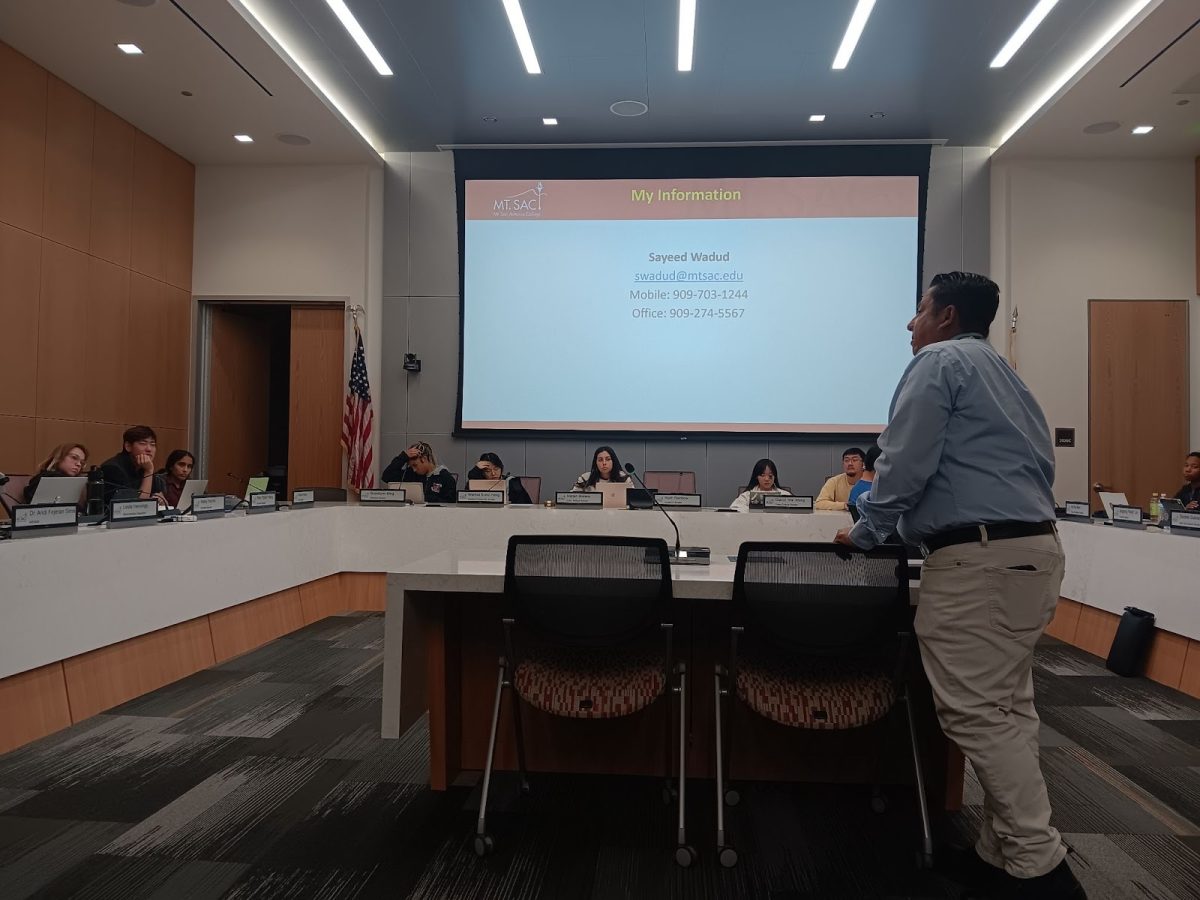Associated Student and Emergency Management met on Nov. 28 to discuss various approaches and procedures that could enhance the safety of students, staff and faculty for next year.
Sayeed Wadud, Mt. SAC’s emergency management manager, explained his vision to the student government to get more involvement from both students and faculty, in efforts to mitigate risks on campus and be more prepared to manage emergencies.
One approach is to have evacuation drills during school hours. “These incoming freshmen are used to drills but we don’t have them [here], so they don’t know what to do as they did in high school,” Wadud said.
While it is common practice for university resident housing and dormitories to schedule frequent fire and disaster safety evacuation drills, educational buildings and smaller institutions such as Mt. SAC generally schedule one to meet the minimal safety requirement.
Faculty was also considered for improving campus safety by ensuring they were well-versed in their sphere of responsibilities during evacuations.
From Sept. 20, Mt. SAC experienced an unusually high level of crime spanning two weeks, highlighting the current roles and capabilities of Mt. SAC Police and Campus Safety. However, it also exposed the confusion and lack of training within the school’s faculty.
In response, Wadud said he desires to set up workshops to train and teach part-time and full-time faculty members about emergency evacuations with an emphasis on how to aid students with disabilities.
Many from Mt. SAC’s ACCESS community felt forgotten or overlooked during the school evacuations that took place in late September. On Dec. 4, Wadud plans to meet with ACCESS members for an hour, discussing building evacuations and other safety protocols.
Freshman Ethan Wang, who serves on the AS board, was appreciative of Wadud’s presentation, however, the feasibility of these drills and who will participate, is still a question the board has. “We probably won’t have all the students and professors participate in this, but at least we’re headed in this direction,” Wang said.
When asked what students and faculty should get from these upcoming events, Wadud said, “How to act. How to act quickly and understand what is going on … what type of emergency is taking place and how to respond to it. That is why these drills are important.”
With the newly implemented training to come, the optimism for high participation rates will hopefully be a stepping stone in the right direction.



